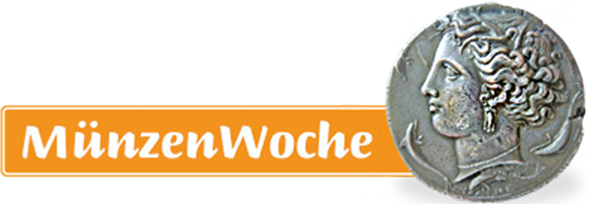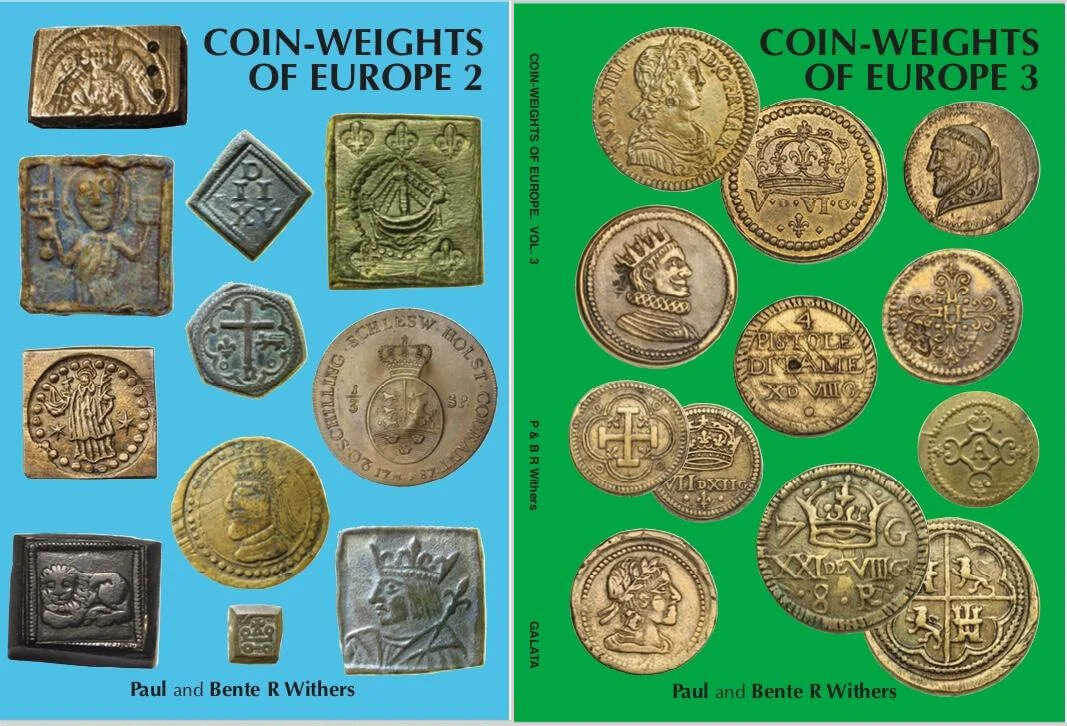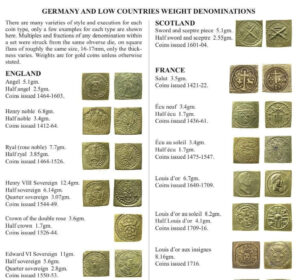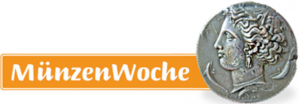The Coin-Weights of Europe
Paul and Bente Withers have been collecting coin-weights for almost fifty years. As a result of which they have compiled these two volumes with the aid of many people and organizations including museums, auction houses, fellow dealers, collectors, archaeologists, researchers, and numismatists in the UK, the Netherlands, Denmark, Germany, Belgium, France, and Italy. These two volumes are result of a life-time’s study and effort, not just by the Withers, but by many others as well.
Above all, the work has three main features – it has literally thousands of life-size, or enlarged color illustrations, it has photo’s or line drawings of the coins the coin-weights were intended to check, and it is in English.
Volume I
The first volume begins with 30 pages designed to give the novice collector who may not be familiar with the subject, information to put him, or her, into the scene, including: a short history, important or useful information such as a list of French kings with their dates of reign, and details of the French (pre-metric) weight system. There is a list of the French and foreign coins for which coin-weights were made in France, together with information about their weights, fineness, dates of issue etc.
It has the French mint identification letters from 1540 until 1890. A table of weights stated on French coin-weights with their gram equivalents. For the reader unfamiliar with French coins the coins are identified by using red numbers indicating weights for gold coins, blue for silver coins, and green for bullion weights. There is a four page glossary which is designed for the use of a wide range of readers of several nationalities, some of whom may have a limited English vocabulary, and perhaps also a limited knowledge of coins and numismatic terms. It is a list of the more common words relating to French and other coin-weights, their English equivalents and vice versa. Amazingly, some pertinent words relating to coin-weights can’t even be found on the internet. Readers are reminded that until 1740 the letter U was written as V, and modern spellings were not fixed until the 1790s, or even later, and spelling can vary with the engraver’s dialect or accent!
The first part of the text proper covers in some detail the earliest coin-weights of France and Flanders made in lead or pewter. Then a detailed catalogue of the mediæval French-made weights for French and foreign coins. It also has the coin-weights of Europe, including the square weights of Germany and the Netherlands, the round weights of Germany, the Austro-Hungarian Empire, Schleswig-Holstein under Danish rule, Poland, Moldavia. Italian-made coin-weights including the weights issued by the Popes for Italian, Spanish and Portuguese coins. The simple numbering system adopted, using the initial letter(s) of the country of issue, makes for easy use for cataloguing by auction houses, and collectors.
The sections on the square coin-weights of the Netherlands and Germany are basically a very good, if not the best identification guide to the weights. Although there is much information freely available on the internet, it is often neither full, nor reliable, but what you read in the book is trustworthy and based on the very latest information from serious researchers and experts in the Netherlands and Belgium.
The coin-weights of Italy are covered in a simplified way (by major type, not minor varieties).
Plain weights with a knob (knop), or pin on top are not generally listed in the books. It leaves them out as they are neither rare nor unusual, simply plain and less interesting. However, some weights of this kind are included along with pictures of weights in boxes and the scales, to tell a little more of the fascinating story of weights and weighing.
Volume II
The second volume has detailed coverage of the post-medieval round and square coin-weights of France. Countermarks from the City of Lyon (and other places) are illustrated enlarged (with references to Lavagne) along with those from other French mints.
It also has:
- a short essay: Bullion flows and their impact on bimetallic currency values in Europe, c.1300-1800 by Oisín Mac Conamhna,
- the Statutes and Regulations of June 1668 regarding the working practices of the master scale-makers of the city of Lyon,
- a map of the precious metal assay regions and hall marks of France,
- a comprehensive bibliography,
- a table of weights stated on French coin-weights and gram equivalents,
- a specialist legend index – 8 pages of two-column text,
- a five page (3 column) general index.
- a major feature of both volumes is that the type-setting matches as closely as possible the relative sizes and styles of the legends on the weights, including laterally reversed (and upside-down) lettering and special characters.
The catalogue is arranged in a different fashion from traditional works, as the listings are made according to the country of manufacture of the weight, so that coin-weights that were made in France for Burgundian, English, French, Italian, Portuguese, and Spanish coins, are all listed under France. Where possible, readers are referred to appropriate specialist catalogues of coin-weights.
The book can be purchased on the website of Galata.
Paul and Bente Withers published many more book, among other thing “The Token book”.








